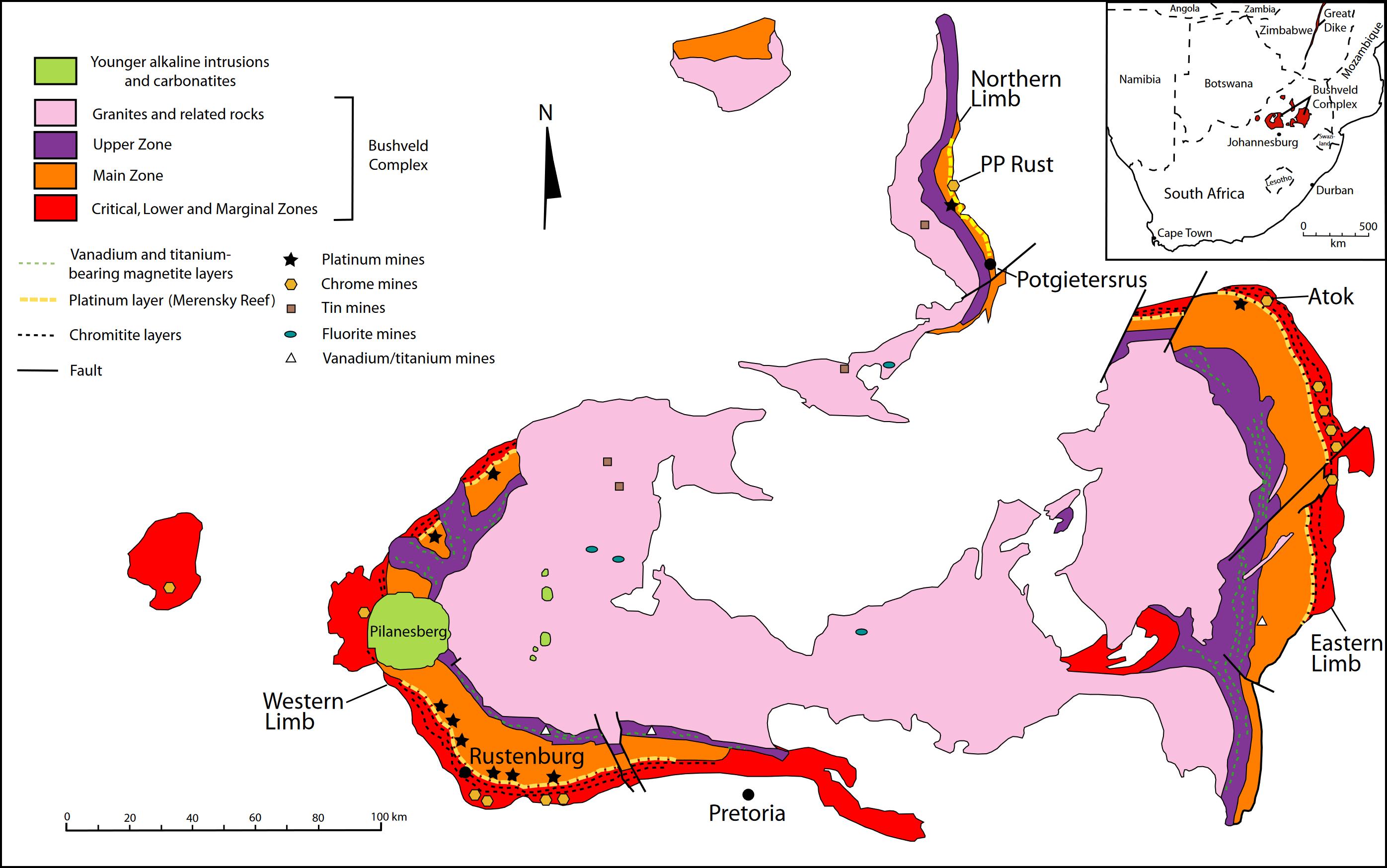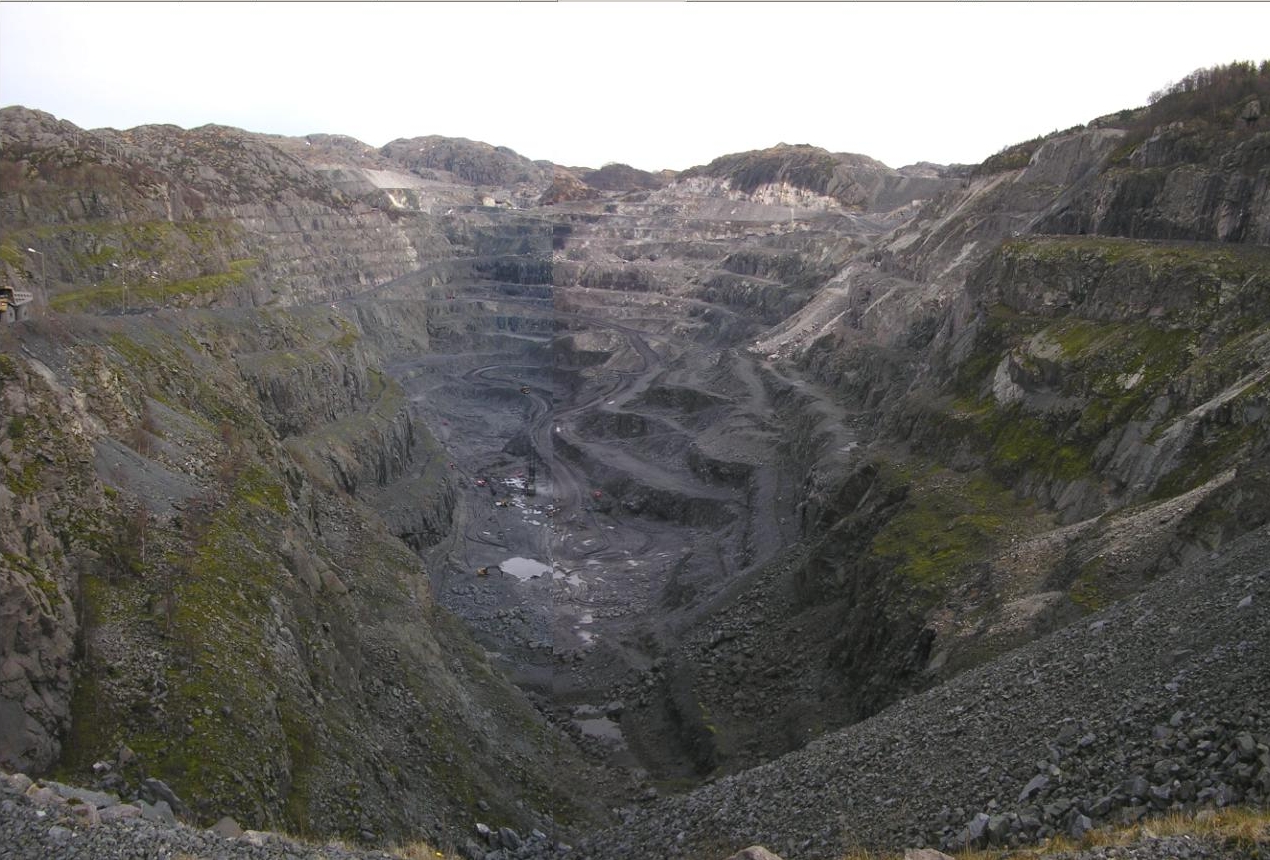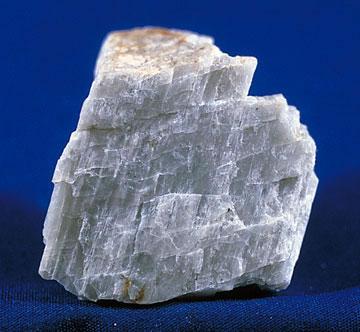|
Anorthosite
Anorthosite () is a phaneritic, intrusive rock, intrusive igneous rock characterized by its composition: mostly plagioclase feldspar (90–100%), with a minimal mafic component (0–10%). Pyroxene, ilmenite, magnetite, and olivine are the mafic minerals most commonly present. Anorthosites are of enormous geologic interest, because it is still not fully understood how they form. Most models involve fractional crystallization (geology), separating plagioclase crystals based on their density. Plagioclase crystals are usually less dense than magma; so, as plagioclase crystallizes in a magma chamber, the plagioclase crystals float to the top, concentrating there. Anorthosite on Earth can be divided into five types: # Archean anorthosites # Proterozoic anorthosite (also known as massif or massif-type anorthosite) – the most abundant type of anorthosite on Earth # Layers within Layered intrusion, Layered Intrusions (e.g., Bushveld Igneous Complex, Bushveld and Stillwater igneous com ... [...More Info...] [...Related Items...] OR: [Wikipedia] [Google] [Baidu] |
Bushveld Igneous Complex
The Bushveld Igneous Complex (BIC) is the largest Layered intrusion, layered igneous intrusion within the Earth's Crust (geology), crust. It has been tilted and Erosion, eroded forming the outcrops around what appears to be the edge of a great Basin (geology), geological basin: the Transvaal Basin. It is approximately two billion years old and is divided into four limbs or lobes: northern, eastern, southern and western. It comprises the Rustenburg Layered suite, the Lebowa Granites and the Rooiberg Felsics, that are overlain by the Karoo sediments. The site was first publicised around 1897 by Gustaaf Molengraaff who found the native South African tribes residing in and around the area. Located in South Africa, the BIC contains some of the richest ore deposits on Earth. It contains the world's largest reserves of platinum-group metals (PGMs) and Platinum group, platinum group elements (PGEs) — platinum, palladium, osmium, iridium, rhodium and ruthenium — along with vast quantit ... [...More Info...] [...Related Items...] OR: [Wikipedia] [Google] [Baidu] |
Layered Intrusion
A layered intrusion is a large sill-like body of igneous rock which exhibits vertical layering or differences in composition and texture. These intrusions can be many kilometres in area covering from around to over and several hundred metres to over in thickness.Blatt, Harvey and Tracy, Robert J. (1996) ''Petrology: Igneous, Sedimentary and Metamorphic,'' 2nd ed., pp. 123–132 & 194–197, Freeman, While most layered intrusions are Archean to Proterozoic in age (for example, the Paleoproterozoic Bushveld complex), they may be any age such as the Cenozoic Skaergaard intrusion of east Greenland or the Rum layered intrusion in Scotland. Although most are ultramafic to mafic in composition, the Ilimaussaq intrusive complex of Greenland is an alkalic intrusion. Layered intrusions are typically found in ancient cratons and are rare but worldwide in distribution. The intrusive complexes exhibit evidence of fractional crystallization and crystal segregation by settling or ... [...More Info...] [...Related Items...] OR: [Wikipedia] [Google] [Baidu] |
Geology Of The Moon
The geology of the Moon (sometimes called selenology, although the latter term can refer more generally to "lunar science") is the structure and composition of the The Moon, Moon, which is quite different from that of Earth. The Moon Atmosphere of the Moon, lacks a true atmosphere outside of a sparse layer of gas. Because of this, the absence of free oxygen and water eliminates erosion due to weather. Instead, the surface is eroded much more slowly through the bombardment of the lunar surface by micrometeorites. It does not have any known form of plate tectonics, along with having a lower gravity compared to Earth. Because of its small size, it cooled faster in the early days of its formation. In addition to impacts, the geomorphology of the lunar surface has been shaped by volcanism, which is now thought to have ended less than 50 million years ago. The Moon is a planetary differentiation, differentiated body, with a crust (geology), crust, mantle (geology), mantle, and planetary ... [...More Info...] [...Related Items...] OR: [Wikipedia] [Google] [Baidu] |
Ilmenite
Ilmenite is a titanium-iron oxide mineral with the idealized formula . It is a weakly magnetic black or steel-gray solid. Ilmenite is the most important ore of titanium and the main source of titanium dioxide, which is used in paints, printing inks, fabrics, plastics, paper, sunscreen, food and cosmetics. Structure and properties Ilmenite is a heavy (specific gravity 4.7), moderately hard (Mohs hardness 5.6 to 6), opaque black mineral with a submetallic luster. It is almost always massive, with thick tabular crystals being quite rare. It shows no discernible cleavage, breaking instead with a conchoidal to uneven fracture. Ilmenite crystallizes in the trigonal system with space group ''R''. The ilmenite crystal structure consists of an ordered derivative of the corundum structure; in corundum all cations are identical but in ilmenite Fe2+ and Ti4+ ions occupy alternating layers perpendicular to the trigonal c axis. Pure ilmenite is paramagnetic (showing only very weak ... [...More Info...] [...Related Items...] OR: [Wikipedia] [Google] [Baidu] |
Stillwater Igneous Complex
The Stillwater igneous complex is a large layered mafic intrusion (LMI) located in southern Montana in Stillwater, Sweet Grass and Park Counties. The complex is exposed across 30 miles (48 km) of the north flank of the Beartooth Mountain Range. The complex has extensive reserves of chromium ore and has a history of being mined for chromium. More recent mining activity has produced palladium and other platinum group elements.The Stillwater Complex: A review of the geology by I. S. McCallum http://serc.carleton.edu/files/NAGTWorkshops/petrology03/McCallum.Stillwater.doc Geology The Stillwater complex is a large layered intrusion with many similarities to the Bushveld igneous complex of South Africa. The complex was intruded into existing gneisses during the Archean at about 2700 Ma. Host rocks on the northern side are Archean sedimentary rocks while the southern boundary includes Precambrian rocks of granite, granite gneiss and schist. The Precambrian rock on its sou ... [...More Info...] [...Related Items...] OR: [Wikipedia] [Google] [Baidu] |
Feldspar
Feldspar ( ; sometimes spelled felspar) is a group of rock-forming aluminium tectosilicate minerals, also containing other cations such as sodium, calcium, potassium, or barium. The most common members of the feldspar group are the ''plagioclase'' (sodium-calcium) feldspars and the ''alkali'' (potassium-sodium) feldspars. Feldspars make up about 60% of the Earth's crust and 41% of the Earth's continental crust by weight. Feldspars crystallize from magma as both intrusive and extrusive igneous rocks and are also present in many types of metamorphic rock. Rock formed almost entirely of calcic plagioclase feldspar is known as anorthosite. Feldspars are also found in many types of sedimentary rocks. Etymology The name ''feldspar'' derives from the German , a compound of the words ' ("field") and ("flake"). had long been used as the word for "a rock easily cleaved into flakes"; was introduced in the 18th century as a more specific term, referring perhaps to its comm ... [...More Info...] [...Related Items...] OR: [Wikipedia] [Google] [Baidu] |
Plagioclase
Plagioclase ( ) is a series of Silicate minerals#Tectosilicates, tectosilicate (framework silicate) minerals within the feldspar group. Rather than referring to a particular mineral with a specific chemical composition, plagioclase is a continuous solid solution series, more properly known as the plagioclase feldspar series. This was first shown by the German mineralogist Johann F. C. Hessel, Johann Friedrich Christian Hessel (1796–1872) in 1826. The series ranges from albite to anorthite endmembers (with respective compositions NaAlSi3O8 to CaAl2Si2O8), where sodium and calcium atoms can substitute for each other in the mineral's crystallography, crystal lattice structure. Plagioclase in hand samples is often identified by its polysynthetic crystal twinning or "phonograph record, record-groove" effect. Plagioclase is a major constituent mineral in Earth's crust and is consequently an important diagnostic tool in petrology for identifying the composition, origin and evolutio ... [...More Info...] [...Related Items...] OR: [Wikipedia] [Google] [Baidu] |
Archean
The Archean ( , also spelled Archaean or Archæan), in older sources sometimes called the Archaeozoic, is the second of the four geologic eons of Earth's history of Earth, history, preceded by the Hadean Eon and followed by the Proterozoic and the Phanerozoic. The Archean represents the time period from (million years ago). The Late Heavy Bombardment is hypothesized to overlap with the beginning of the Archean. The Huronian glaciation occurred at the end of the eon. The Earth during the Archean was mostly a ocean world, water world: there was continental crust, but much of it was under an ocean deeper than today's oceans. Except for some rare Relict (geology), relict crystals, today's oldest continental crust dates back to the Archean. Much of the geological detail of the Archean has been destroyed by subsequent activity. The Earth's atmosphere was also vastly different in atmospheric chemistry, composition from today's: the prebiotic atmosphere was a reducing atmosphere rich in ... [...More Info...] [...Related Items...] OR: [Wikipedia] [Google] [Baidu] |
Salem District
Salem District is one of the 38 districts of Tamil Nadu state in southern India. The district is now divided into Dharmapuri, Krishnagiri, Namakkal as individual districts. Salem is the district headquarters and other major towns in the district include Mettur, Tharamangalam, Thammampatti, Attur, Omalur, Sangagiri and Edappadi. That Salem dates to at least two thousand years ago is evident from the discovery of silver coins from the Roman Emperor Nero Claudius Caesar Augustus Germanicus (37–68 CE) found by Koneripatti of Salem in 1987. It was ruled by Mazhavar King Kolli Mazhavan and kings Adhiyaman and Valvil Ori of Sangam age. It is part of Mazhanadu, a vast region that dates to the second century BCE. Salem was the largest district of Tamil Nadu. It was bifurcated into Salem and Dharmapuri districts in 1965 and Namakkal district in 1997. Now Salem has been developed a lot by building many bridges and is considered to be the Smart city. Salem is famous for cu ... [...More Info...] [...Related Items...] OR: [Wikipedia] [Google] [Baidu] |
Mid-ocean Ridge
A mid-ocean ridge (MOR) is a undersea mountain range, seafloor mountain system formed by plate tectonics. It typically has a depth of about and rises about above the deepest portion of an ocean basin. This feature is where seafloor spreading takes place along a Divergent boundary, divergent plate boundary. The rate of seafloor spreading determines the morphology of the crest of the mid-ocean ridge and its width in an ocean basin. The production of new seafloor and oceanic lithosphere results from Mantle (geology), mantle upwelling in response to plate separation. The melt rises as magma at the linear weakness between the separating plates, and emerges as lava, creating new oceanic crust and lithosphere upon cooling. The first discovered mid-ocean ridge was the Mid-Atlantic Ridge, which is a spreading center that bisects the North and South Atlantic basins; hence the origin of the name 'mid-ocean ridge'. Most oceanic spreading centers are not in the middle of their hosting oce ... [...More Info...] [...Related Items...] OR: [Wikipedia] [Google] [Baidu] |
Granites
Granite ( ) is a coarse-grained ( phaneritic) intrusive igneous rock composed mostly of quartz, alkali feldspar, and plagioclase. It forms from magma with a high content of silica and alkali metal oxides that slowly cools and solidifies underground. It is common in the continental crust of Earth, where it is found in igneous intrusions. These range in size from dikes only a few centimeters across to batholiths exposed over hundreds of square kilometers. Granite is typical of a larger family of ''granitic rocks'', or '' granitoids'', that are composed mostly of coarse-grained quartz and feldspars in varying proportions. These rocks are classified by the relative percentages of quartz, alkali feldspar, and plagioclase (the QAPF classification), with true granite representing granitic rocks rich in quartz and alkali feldspar. Most granitic rocks also contain mica or amphibole minerals, though a few (known as leucogranites) contain almost no dark minerals. Granite is nearly alw ... [...More Info...] [...Related Items...] OR: [Wikipedia] [Google] [Baidu] |







